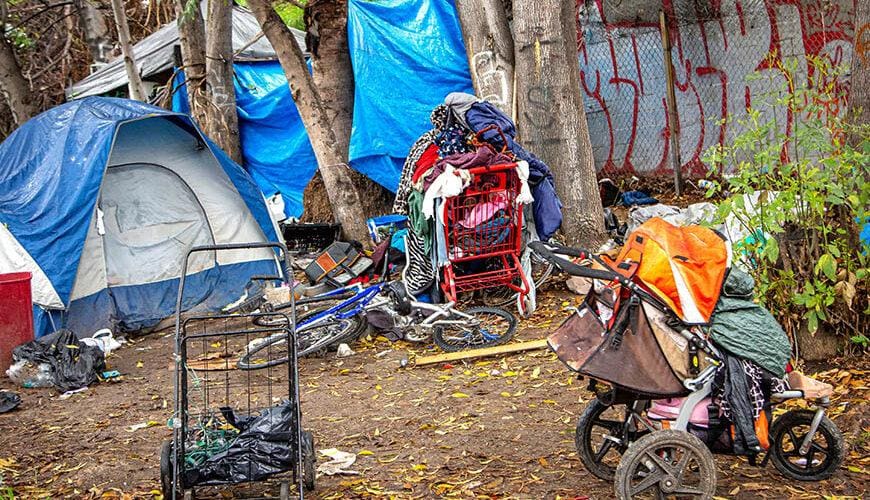Homeless Encampments

Homeless Encampments
Homeless encampments are locations where homeless people live in an unsheltered or unimproved area. These encampments can be situated on private property or upon property owned by companies or government agencies.
The U.S. Department of Housing and Development found that California accounted for more than 1 in 5 homeless people in the United States. Specifically, 20.7% of the national totals of 633,782 people or 131,193 homeless people were found to be in California.
Extreme Remediation works with property owners and government agencies to clean homeless encampments after the residents are relocated.
Who is responsible for closing a homeless encampment?
According to calrecycle.ca.gov “Local governmental agencies, as well as state and federal agencies, may abate homeless encampments on public property by using existing statutes and local housing, health and safety, water, and penal codes to order the residents to the encampments to leave and then summarily abate the wastes that remain. The failure of the responsible party to abate a public nuisance can be prosecuted as a misdemeanor, and the court can also order abatement of the nuisance. The private property owner can use the same codes to initiate abatement of homeless encampments on their property, and/or the local governmental agencies can order the property owner to abate the encampments.”
What dangers do homeless encampments pose:
- GarbageCity trash disposal is not typically available to homeless encampments. Unfortunately, this presents a situation whereby common everyday household trash builds up around the encampment. This trash attracts disease carrying rodents that can cause sickness and illness to residents of the encampment.
- Human and Animal Biological WastesHomeless encampments often lack proper bathroom facilities and residents are unable to dispose of fecal matter and urine. Additionally, animal waste is often found within and around homeless encampments. Without proper collection and disposal, these biohazards can contaminate ground and surface water supplies, transmit diseases, and produce offensive odors.
- Combustible and Noncombustible RubbishDiscarded materials such as wood, paper, bedding, clothing, metals & glass typically litter a homeless encampment. Some of these items provide a perfect source of fuel if an ignition source is nearby.
- Sharps, Drugs and Biohazard WasteMany residents of homeless encampments are drug users. It's not uncommon to find used needles, syringes and bloody tissues scattered about the encampment. These biohazards can be contaminated with any number of communicable diseases.
Or: 1-317-759-1912
Crime Scene Cleanup
& Hoarding Cleanup Service to:
Indiana, Kentucky, Tennessee,
Ohio, Illinois
Michigan & Wisconsin
Service Area
-
INDIANA
- Anderson
- Bloomington
- Eklhart
- Evansville
- Fort Wayne
- Gary
- Hammond
- Indianapolis
- Lafayette
- Muncie
- South Bend
- Terre Haute
- Other Indiana Cities KENTUCKY
- Covington
- Elizabethtown
- Fayette
- Frankfurt
- Henderson
- Hopkinsville
- Lexington
- Louisville
- Owensboro
- Paducah
- Pleasure Ridge Park
- Arcadia
- Peoria
- Rockford
- Springfield
- Waukegan
- Other Illinois Cities MICHIGAN
- Ann Arbor
- Battle Creek
- Canton
- Dearborn
- Dearborn Heights
- Detroit
- Flint
- Grand Rapids
- Kalamazoo
- Lansing
- Livonia
- Pontiac
- Rochester
- Saginaw
- Shelby
- Troy
- Waterford
- Other Michigan Cities
